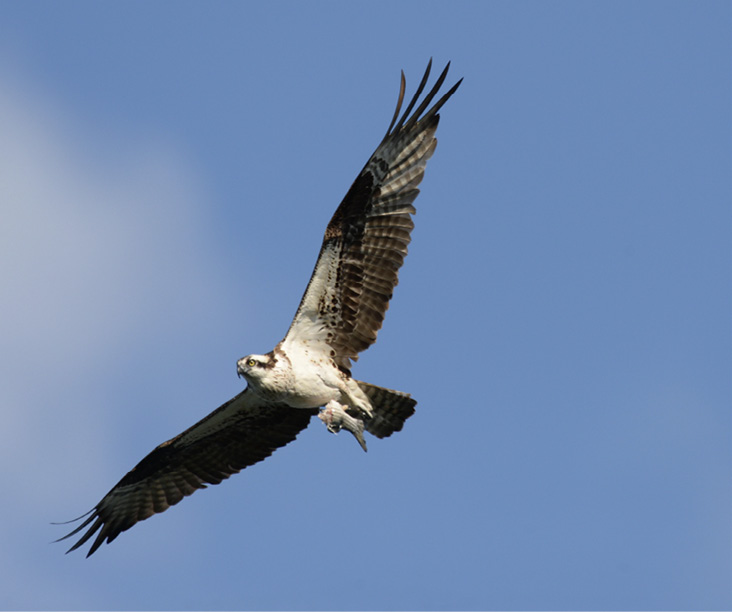David W. Rimmer

Adult Osprey soars overhead holding the remains of a caught fish. Photograph by Steve Saxe.
Introduction
One of the largest and most recognizable birds of prey, the Osprey (Pandion haliaetus) is a widely distributed species, found on every continent except Antarctica (Poole 1989). In North America, Ospreys breed in three distinct regions—western, central, and eastern. Historically, they built large stick nests primarily in trees near water and fed almost exclusively on fresh- or saltwater fish.
All three of these North American populations experienced sharp declines in the twentieth century, due in part to habitat loss, i.e., lack of trees to nest in. Eventually, the more acute cause of their population decline was the ingestion of pesticides that bioaccumulated in fish, especially DDT (dichlorodiphenyltrichloroethane), an agricultural pesticide widely used in the mid-twentieth century. DDT ingested by adult Ospreys resulted in weakened eggshells that broke during egg laying or incubation, leading to suppressed productivity and recruitment. DDT was banned in the United States in the 1970s, and along with increased conservation efforts such as chick hacking and artificial nesting platform installations, Osprey populations began to rebound.
To view the rest of the article you'll need to
subscribe. Bird Observer publishes original articles on birding locations, on avian populations and natural history, on regional rarities, field notes, field records, photographs, and art work.